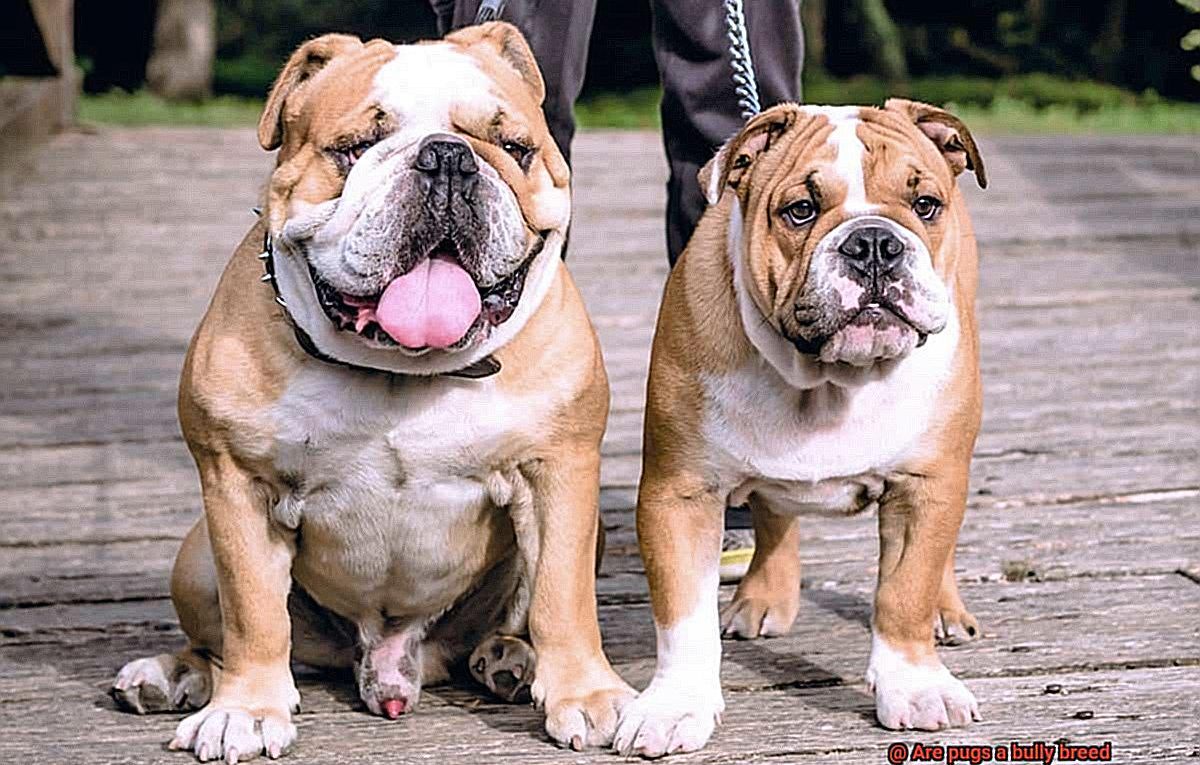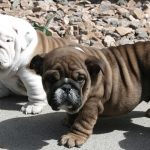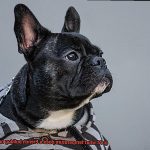Are pugs a bully breed?
Love dogs? Then you’ve probably heard the term “bully breed” tossed around, conjuring up images of tough, beefy canines. But in the wide world of dog breeds, one little charmer stands out – the pug.
With their squished faces, expressive eyes, and goofy personalities, pugs have stolen hearts worldwide. Yet, when it comes to labeling them as a bully breed, opinions diverge. So, what’s the real deal with pugs?
In this blog post, we’ll dive into the captivating world of pugs and answer the burning question: are they true bullies? Join us on this journey as we debunk misconceptions, shed light on their unique traits, and reveal the pug’s true nature beneath their irresistibly adorable facade.
Definition of a Bully Breed
Contents
In this article, we will dive into the definition of a bully breed and shed light on whether pugs can be classified as such. So, let’s embark on this enlightening journey together.
Defining Bully Breeds:
Bully breeds are a group of dog breeds that are recognized for their strong, muscular physique rather than their temperament. These medium to large-sized dogs exhibit broad chests, thick necks, and a robust build. It is important to note that the term “bully” here refers solely to their physical appearance and not their behavior or personality.
Examples of Bully Breeds:
Some commonly known bully breeds include the American Pit Bull Terrier, Staffordshire Bull Terrier, American Bulldog, and Boxer. These breeds were initially bred for various purposes such as hunting, guarding, and working alongside humans. However, contrary to popular belief, these dogs possess gentle and friendly temperaments towards humans.
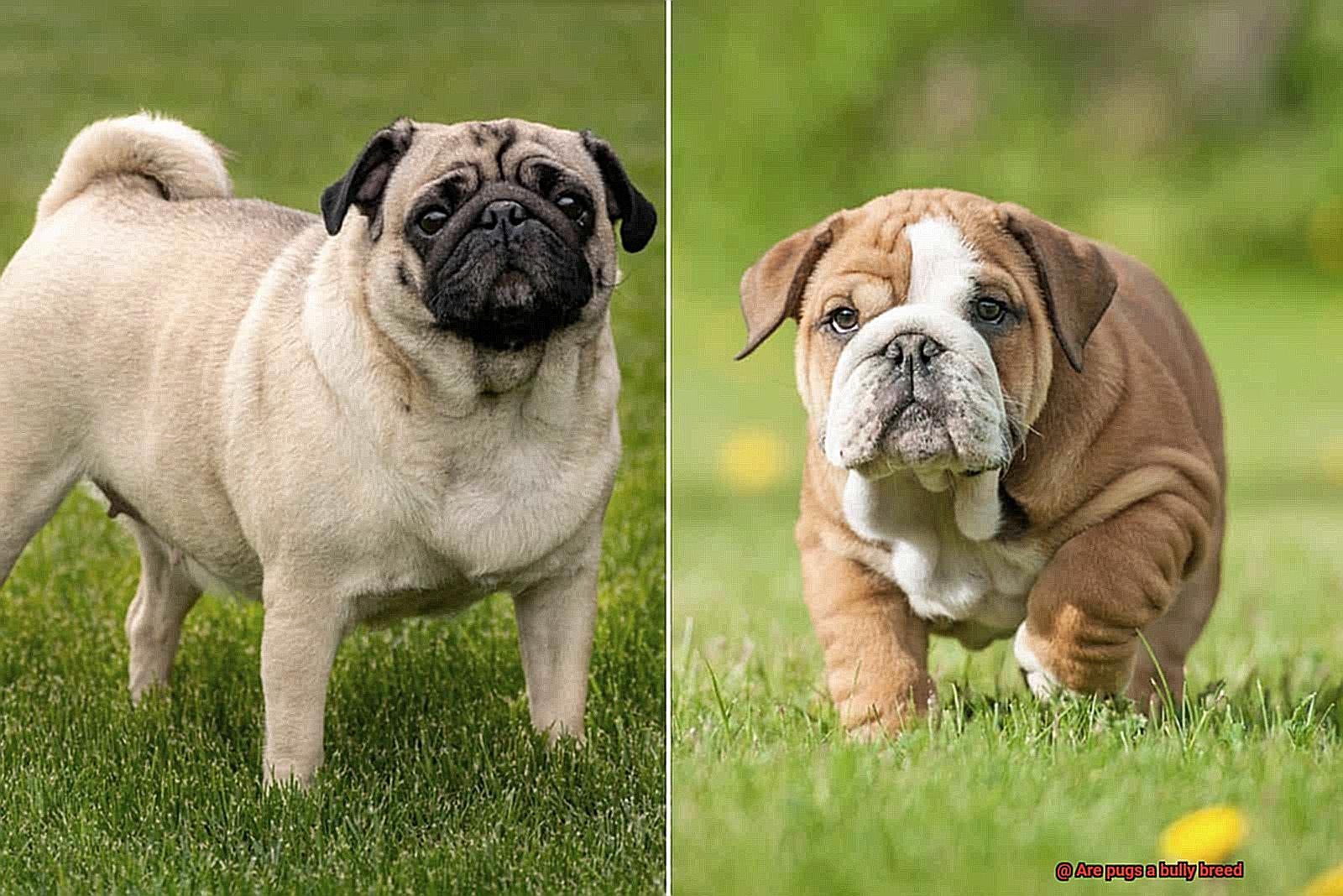
Pugs: Not Your Typical Bully Breed:
When considering whether pugs can be considered bully breeds, it is crucial to examine their unique characteristics and history. Pugs have distinct features that set them apart from traditional bully breeds. They are small and compact dogs with wrinkled faces, curly tails, and a sociable nature. Pugs were originally bred in China as companion dogs for the aristocracy and were never intended for aggression or fighting purposes.
Temperament and Behavior:
Pugs are widely recognized for their affectionate and playful nature. They display a calm and gentle demeanor, making them excellent family pets. Unlike bully breeds that may exhibit more dominant or protective behaviors, pugs are known for being friendly towards both humans and other animals.
Physical Attributes:
While pugs may share certain physical traits with bully breeds, such as a square-shaped head or a muscular body, it is important to understand that these characteristics alone do not classify them as bully breeds. Pugs have been selectively bred for their unique appearance rather than for aggression or fighting capabilities.
Expert Opinions:
To further support our argument, let’s consider the insights of experts in dog breeds and behavior. These professionals uphold the notion that pugs do not fall under the category of bully breeds due to their friendly and sociable nature, lack of historical association with aggression, and purposeful breeding for companionship.
Conclusion:
In conclusion, pugs are not considered bully breeds. Their distinct characteristics, history, temperament, and purposeful breeding for companionship distinguish them from traditional bully breed dogs.
Understanding the true definition of a bully breed and dispelling misconceptions surrounding pugs will allow you to appreciate their unique qualities as loving family pets.
Characteristics of the Pug Breed
The Pug breed is a fascinating and delightful companion animal, known for its distinctive appearance, friendly personality, and minimal grooming needs. If you are a French Bulldog owner or considering adding a new furry friend to your family, here’s what you need to know about the characteristics of the Pug breed.
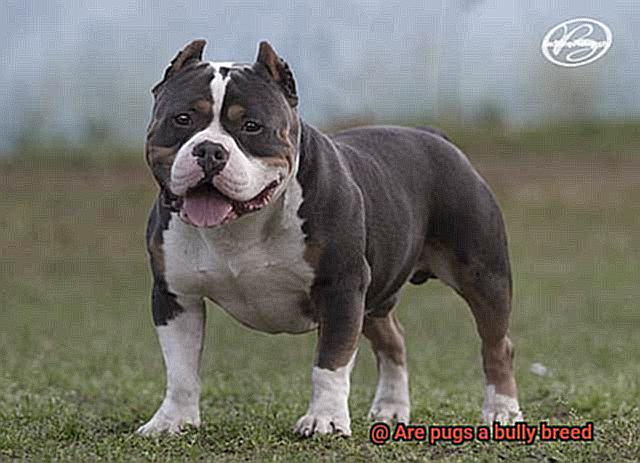
Physical Characteristics
Pugs have a unique and adorable appearance that sets them apart from other breeds. They are small in size, with a sturdy and muscular build. Their most recognizable feature is their short muzzle, which gives them a smushed face and endearing wrinkles. Pugs also have a curly tail that adds to their charm.
Personality Traits
Pugs are known for their friendly and sociable nature. They make excellent family pets and get along well with children and other animals. They thrive on attention and love being the center of attraction. Pugs have a moderate activity level and enjoy regular exercise to keep them healthy and prevent obesity.
Grooming Needs
One of the benefits of owning a Pug is their low-maintenance grooming requirements. Their short coat does not require extensive grooming, but they do shed moderately throughout the year. Regular brushing can help control shedding and keep their coat looking neat. Additionally, Pugs need regular nail trims, dental care, and ear cleaning to maintain their overall health.
Health Concerns
While Pugs are generally healthy dogs, they are prone to certain health issues due to their unique physical characteristics. Their short snouts can cause respiratory problems, so it’s important to monitor their breathing and avoid strenuous exercise in hot weather. Pugs may also experience eye problems, skin allergies, and joint issues. Regular vet check-ups and proper care can help prevent or address these health concerns.
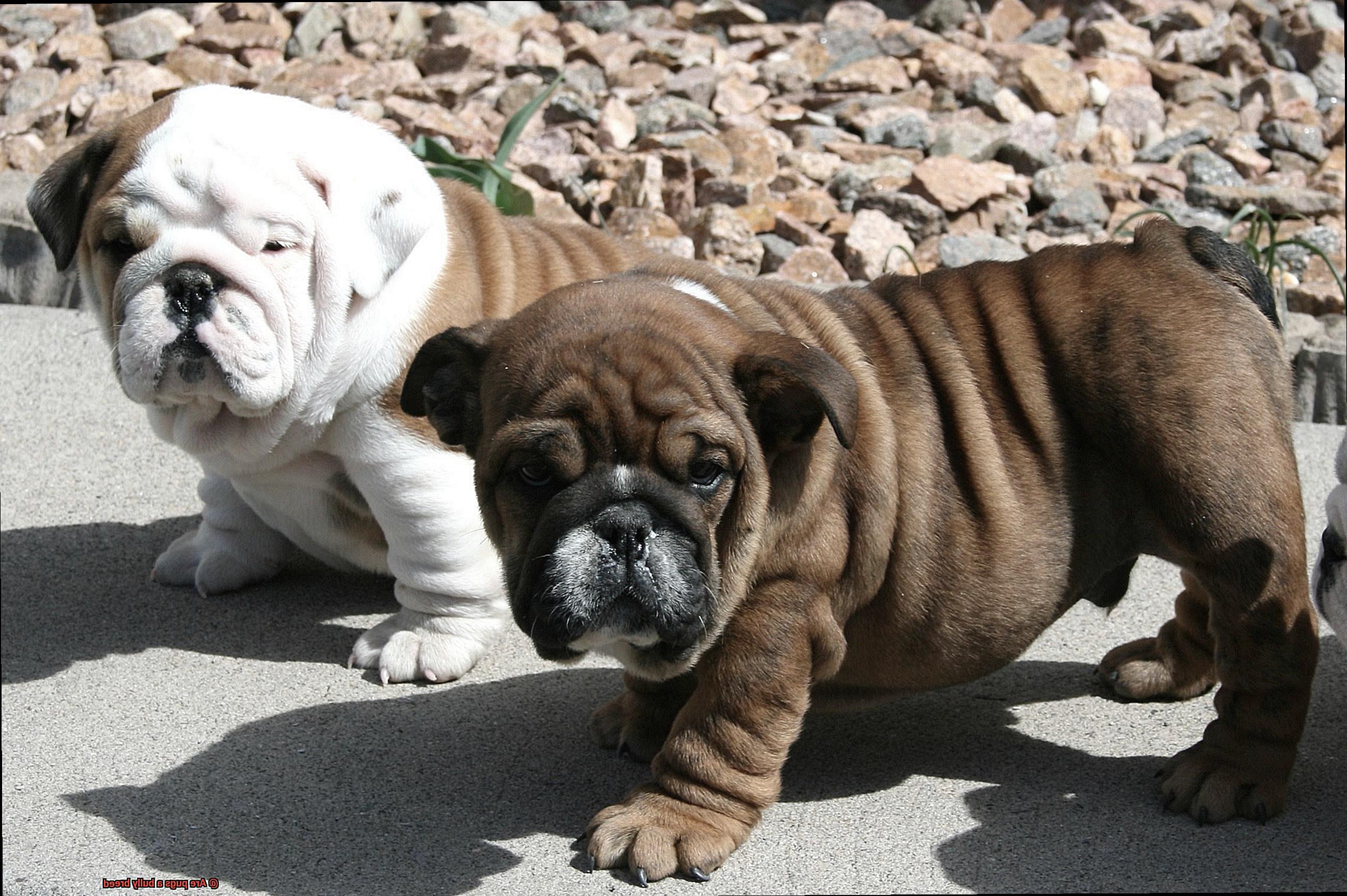
History of the Pug Breed
These adorable little dogs have a rich history that dates back over 2,000 years to ancient China. So, let’s embark on a journey through time and explore the fascinating story of the Pug breed.
Ancient China: Where it all began
In ancient times, Pugs were highly valued by Chinese emperors and were seen as a symbol of wealth and luxury. They were originally bred as companion dogs for the Chinese nobility and often resided in the imperial palace. Can you imagine being pampered like royalty? Well, that was the life of a Pug back then.
Europe falls in love
Fast forward to the 16th century when these precious pups made their way to Europe through trade routes. European nobility quickly fell in love with Pugs, and they became a favorite pet among the elite.
The ruling families of the House of Orange-Nassau in the Netherlands were particularly fond of them. In fact, they even gave Pugs their Dutch name, “Mopshond,” which means “to grumble” or “short-faced dog.”
Pugs conquer England
In 1688, when William III and Mary II ascended the English throne, they brought their beloved Pugs with them from Holland. The couple adored these little dogs, and their affection for them sparked a trend among the English aristocracy. During the Victorian era, Pugs became popular pets among the middle class too. They were often depicted in paintings, showcasing their fashionable status.
Pugs take on America
Across the pond, Pugs made their mark in the United States when they were officially recognized by the American Kennel Club in 188This makes Pugs one of the oldest recognized breeds in the country. Since then, their popularity has only grown, and they continue to capture hearts with their irresistible charm.
The Pug’s timeless charm
While the appearance of Pugs has evolved slightly over time, they have retained their distinctive characteristics. Their short, stocky bodies, large round heads, and expressive eyes still make them instantly recognizable. Pugs are known for their friendly and affectionate nature, earning them the title of “clowns” due to their playful and mischievous behavior.
Today, Pugs are cherished pets worldwide, bringing joy and laughter to countless families. Whether you’re a fan of French Bulldogs or Pugs, these delightful breeds have undoubtedly left an indelible pawprint on the history of canine companionship.
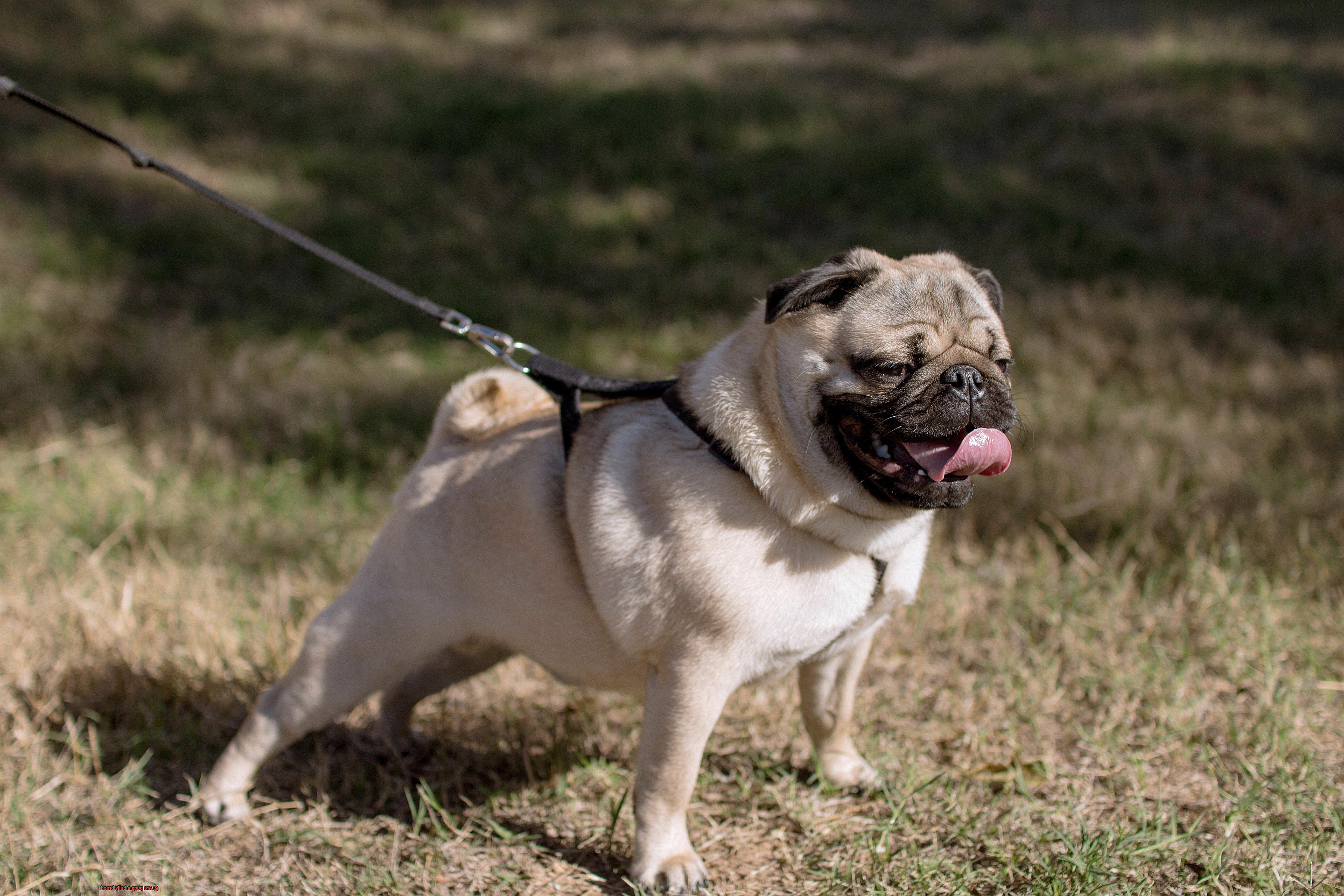
Temperament of the Pug Breed
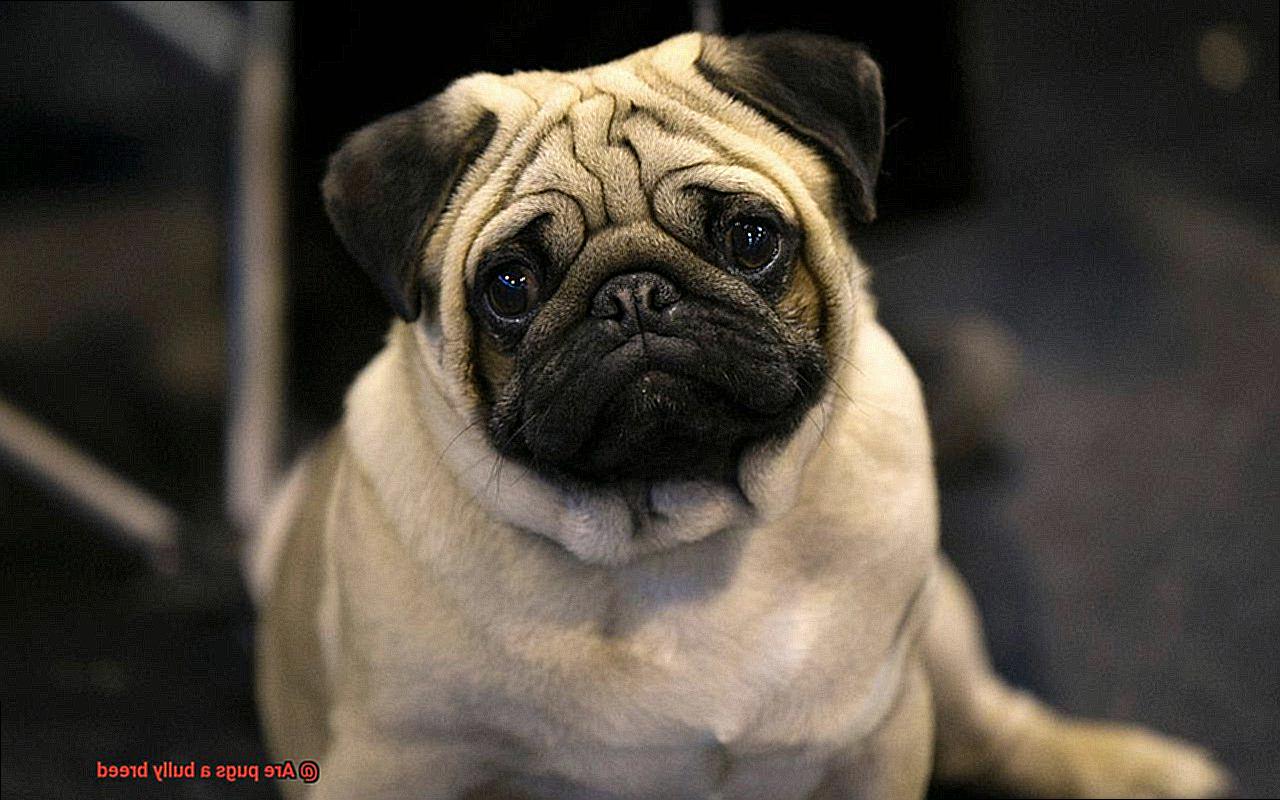
The Playful Pug: A Temperament Tail
Ah, the delightful Pug breed. With their squishy faces and curly tails, these little charmers have captured the hearts of dog lovers everywhere. But what about their temperament? Are Pugs as lovable on the inside as they are on the outside? Let’s dive into their unique personality traits and explore what makes them such wonderful companions.
Friendly and Affectionate
Pugs are renowned for their friendly and affectionate nature. They have an innate ability to make friends with everyone they meet, from strangers on the street to other four-legged pals at the dog park. Their loving and sociable temperament makes them excellent family dogs who get along famously with people of all ages, including children.
Attention-seeking Velcro Dogs
If you’re looking for a constant companion, look no further than a Pug. These furry little shadows love nothing more than being by your side at all times. They’ve earned the nickname “velcro dogs” for a reason. Whether you’re watching TV, cooking in the kitchen, or simply lounging on the couch, your Pug will be right there, soaking up your attention and showering you with affection.
Playful Clowns
Pugs have a mischievous streak and a great sense of humor. They love engaging in games and playtime with their owners, often showcasing their clownish antics that never fail to bring a smile to your face. From zooming around the room like a tiny tornado to rolling around in fits of laughter-inducing silliness, Pugs know how to keep their families entertained.
Easygoing and Adaptable
Unlike some high-energy breeds, Pugs are generally easygoing and adaptable dogs. They can thrive in various living environments, whether it’s a cozy apartment or a spacious house. While they may not require intense exercise regimens, daily walks or play sessions are essential to keep them happy and healthy. A tired Pug is a contented Pug.
Sensitivity and Emotional Intelligence
One of the endearing qualities of Pugs is their sensitivity. They are highly attuned to their owners’ emotions and can sense when something is amiss. This makes them excellent therapy dogs, as they have an innate ability to provide comfort and emotional support. If you’re feeling down, a snuggle session with your Pug can work wonders for your spirits.
Physical Attributes of the Pug Breed
If you’re a fan of those adorable smushy faces, then you’re in for a treat with the Pug breed. Pugs, like Frenchies, are known for their unique physical attributes that make them irresistibly cute and lovable. In this blog post, we’ll dive deep into the physical characteristics of Pugs, so you can fully appreciate their charm and understand what sets them apart from your beloved Frenchies.
Compact and Muscular Body:
Pugs may be small in size, but they pack a punch when it comes to their physique. With a compact and muscular body, they have a square-shaped appearance that is undeniably endearing.
Wrinkled Face:
Just like French Bulldogs, Pugs are famous for their wrinkled faces. However, Pugs take it to another level with their deeply wrinkled foreheads and expressive eyes. These wrinkles require regular cleaning and care to keep them healthy and free from infections.
Brachycephalic Skull Shape:
Pugs share a similar skull shape with Frenchies – brachycephalic. This means their heads are relatively broad and short-nosed. While this gives them a distinctive look, it’s important to be aware of potential health issues related to this trait, such as breathing difficulties and overheating.
Curly Tail:
One of the most charming features of Pugs is their curly tail, which is tightly curled over their backs in a unique “screw” shape. This adorable tail adds an extra touch of character to their overall appearance.
Smooth Coat:
Pugs have a smooth, short coat that comes in various colors like fawn, black, silver, and apricot. Unlike the French Bulldog’s finer coat, the Pug’s coat is relatively low-maintenance, requiring regular brushing to keep it clean and free of loose hairs.
Sturdy Build:
Despite their small size, Pugs have a sturdy build with a broad chest and strong legs. This solid physique gives them a confident and well-muscled appearance, but it also means they need proper exercise and a balanced diet to avoid weight gain.
Expressive Eyes:
The Pug’s large, round eyes are a window to their soulful and puppy-like nature. Dark in color, these expressive eyes are sure to melt your heart and make you fall head over heels for this breed.
Expert Opinions on Whether Pugs are a Bully Breed
If you’re a dog lover, chances are you’ve heard of the term “bully breed.” It’s often associated with breeds such as Pit Bulls, Bulldogs, and Mastiffs. But what about our lovable little Pugs? Are they also considered a bully breed? Let’s dive into the expert opinions on this topic and find out.
Temperament: Friendly and Sociable
One of the main reasons why experts agree that Pugs are not a bully breed is their temperament. Bully breeds are often unfairly labeled as aggressive or dangerous, but Pugs are known for their friendly and sociable nature.
They have a reputation for being good-natured and getting along well with people, children, and even other animals. Their playful and affectionate nature sets them apart from the typical traits associated with bully breeds.
History and Purpose of Breeding
When considering whether Pugs are a bully breed, it’s essential to look at their history and purpose of breeding. Bully breeds were originally bred for specific tasks such as guarding, hunting, or fighting.
These breeds were selectively bred for their physical strength and tenacity. Pugs, on the other hand, have a different history. They were bred in China as companion dogs for the nobility and were never intended for any aggressive or confrontational purposes. Their breeding purpose further distinguishes them from bully breeds.
Physical Attributes: Unique Appearance
Another aspect to consider when determining whether Pugs are a bully breed is their physical attributes. Bully breeds are known for their muscular build and powerful jaws, while Pugs have a distinct appearance characterized by their wrinkled face, short muzzle, and bulging eyes. These unique features make them easily distinguishable from the typical bully breed look.
Individual Variations
It’s important to recognize that within any breed, there can be variations in temperament and behavior. While Pugs, as a breed, are generally not considered bully breeds, there may be some individuals that display aggressive tendencies.
These instances could be due to various factors such as poor breeding practices or inadequate socialization. However, it would be unfair to classify the entire breed as a bully breed based on these isolated cases.
Advantages and Disadvantages of Owning a Bully Breed Pug
While both breeds share some similarities, it’s important to understand the advantages and disadvantages that come with owning a Bully Breed Pug. In this article, we’ll dive into the pros and cons of adding this adorable breed to your pack.
Advantages of Owning a Bully Breed Pug:
- Affectionate Nature: Bully Breed Pugs are known for their loving and affectionate nature, just like French Bulldogs. They thrive on human companionship and love to cuddle up on your lap. You can expect a constant companion who will shower you with love and affection.
- Good with Children: Both French Bulldogs and Bully Breed Pugs are known for their gentle and playful nature around kids. If you have children or are planning to start a family, a Bully Breed Pug can be an excellent addition. Their patient and tolerant demeanor make them great companions for little ones.
- Low Exercise Requirements: Just like French Bulldogs, Bully Breed Pugs do not require high levels of physical exercise. Short walks and some indoor playtime will keep them happy and healthy. This is especially beneficial for individuals or families with busy schedules or limited space for regular exercise.
- Adaptability: Bully Breed Pugs are adaptable dogs that can thrive in various living situations, just like Frenchies. They can easily adjust to apartment living and do not necessarily need a large yard to run around in. Whether you live in the city or the countryside, a Bully Breed Pug will fit right in.
Disadvantages of Owning a Bully Breed Pug:
- Health Issues: Unfortunately, both French Bulldogs and Bully Breed Pugs are prone to health issues due to their unique anatomy. The short snout can lead to breathing difficulties, overheating, eye problems, skin allergies, hip dysplasia, and obesity. Regular vet visits and potential medical expenses are essential for their well-being.
- Shedding: Pugs have a short coat that sheds consistently throughout the year, and Bully Breed Pugs are no exception. If you’re someone who prefers a low-maintenance dog or has allergies, the shedding can be a downside. Be prepared for regular grooming and cleaning up loose hair.
- Noise Level: Pugs are notorious for their snorting, snoring, and wheezing sounds – it’s part of their charm. However, if you’re someone who values peace and quiet or is a light sleeper, these noises might become a bit bothersome during sleep or quiet moments.
R5Vt-xhso0Y” >
Conclusion
In conclusion, it is clear that pugs are not classified as a bully breed.
Their adorable appearance and friendly nature make them far from being aggressive or intimidating. Pugs may have a history of being bred for fighting, but over time, they have evolved into loving and affectionate companions.
Their small size and gentle demeanor further support the fact that they do not belong to the bully breed category.
